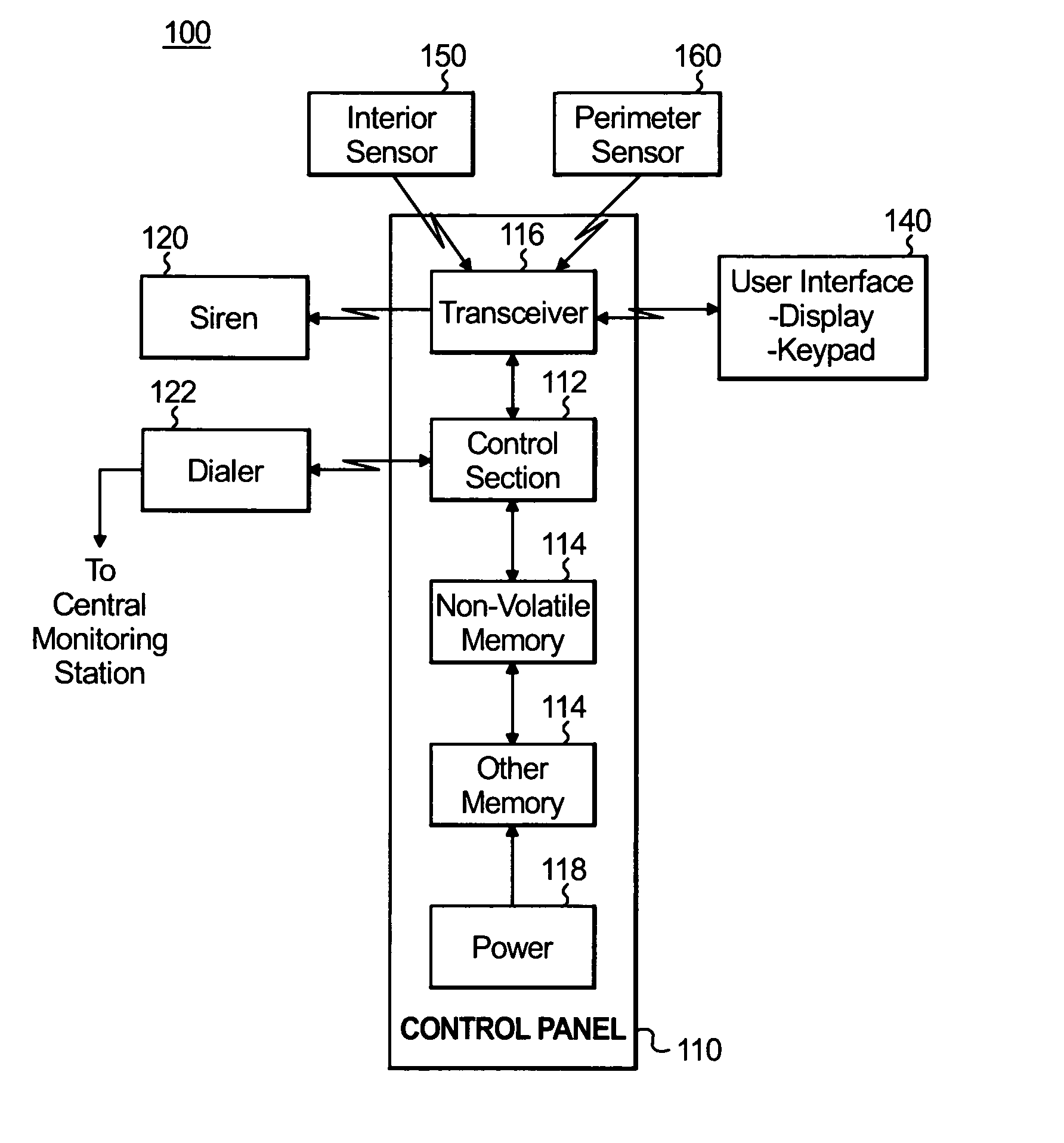Method of reducing false alarms during auto-arm
a technology of automatic arming and false alarms, applied in the direction of alarms, instruments, etc., can solve the problems of security system delaying the automatic arming process, and achieve the effect of reducing false alarms and reducing false alarms
- Summary
- Abstract
- Description
- Claims
- Application Information
AI Technical Summary
Benefits of technology
Problems solved by technology
Method used
Image
Examples
first embodiment
[0030] In the first embodiment, if the system detects both motion and no premises exit, then the system will cancel the auto-arm process. A premises exit is a signal that indicates that one of a plurality of predefined doors has been opened, in an entry / exit zone. This signal means that a person has left the premises.
[0031] At step 300, the control panel 110 will determine if the user has programmed or scheduled an automatic arm of the away mode (hereinafter “Auto-Arm Away”). If the result of the determination is “yes” then the control panel 110 will determine the current time, at step 305. An internal clock within a microcontroller 112 maintains the current time. The current time is compared, using a comparison means, with the predefined detection period or Auto-Arm warning period, at step 310. The Auto-Arm warning period is the time period where the system can warn the user that the system is about automatically arm itself. The period of time is directly prior to the auto-arm time...
second embodiment
[0036] if the system detects both motion and no premises exit, then the system can prevent the system from executing the auto-arm away mode, but rather executing an auto-arm stay mode depending on the location of the detected motion.
[0037]FIG. 4 illustrates the method of reducing false alarms according to the second embodiment of the invention. Steps 300-330 are the same as in the first embodiment and will not be described again.
[0038] In the second embodiment, instead of just canceling the auto-arm function if both motion is detected and no premises exit was detected, the control panel 110 will determine the location of the detected motion and based upon this determination, either cancel the auto arm away (and stay) or allow an auto-arm stay. By allowing for the execution of an auto-arm stay at least part of the security system 100 is armed and some protection is provided.
[0039] The control panel 110 will prevent the system from executing the auto-arm away mode if the perimeter ...
third embodiment
[0041] In the third embodiment, the control panel 110 will cancel the scheduled auto-arm away immediately if any motion is detected during the predefined detection period or auto-arm warning period. No premises exit signal is needed. No type of auto-arming will occur.
[0042]FIG. 5 illustrates the false alarm reducing method according to the third embodiment. Steps 300-320 are the same as the first two embodiments and will not be described. As illustrated in FIG. 5, steps 325 and 330 are eliminated. If any motion is detected the process proceeds directly to step 335. The scheduled auto-arm away mode is cancelled.
[0043]FIG. 6 illustrates the false alarm reducing method according to the fourth embodiment of the invention. Steps 300-330 are the same as the first two embodiments and will not be described again. According to the fourth embodiment of the invention, the auto-arm function can be delayed if motion is detected and a premises exit signal was not detected. The delay of the auto ...
PUM
 Login to View More
Login to View More Abstract
Description
Claims
Application Information
 Login to View More
Login to View More - R&D
- Intellectual Property
- Life Sciences
- Materials
- Tech Scout
- Unparalleled Data Quality
- Higher Quality Content
- 60% Fewer Hallucinations
Browse by: Latest US Patents, China's latest patents, Technical Efficacy Thesaurus, Application Domain, Technology Topic, Popular Technical Reports.
© 2025 PatSnap. All rights reserved.Legal|Privacy policy|Modern Slavery Act Transparency Statement|Sitemap|About US| Contact US: help@patsnap.com



